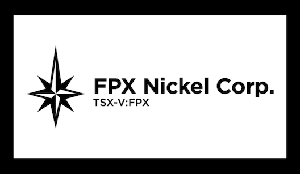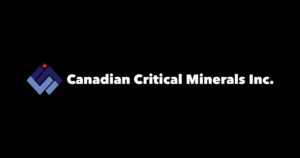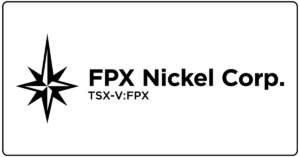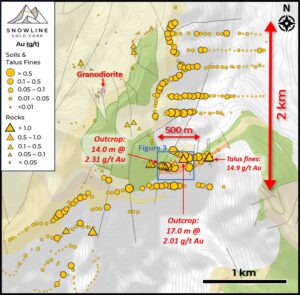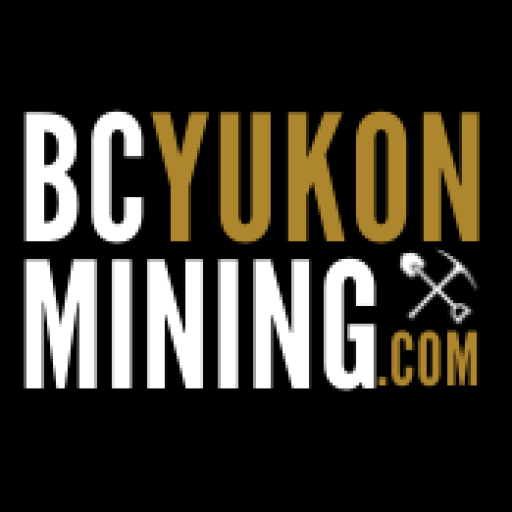Vancouver, B.C. – September 22, 2021 – Pacific Ridge Exploration Ltd. (PEX: TSX Venture: PEXZF; OTCQB) (“Pacific Ridge” or the “Company”) is pleased to announce that it has completed its maiden diamond drill (“DDH”) program at the Kliyul copper-gold porphyry project (“Kliyul” or “Project”), located in the prolific Quesnel Trough in Northwest British Columbia.
Highlights:
- All of the drill holes encountered classic copper-gold porphyry-style mineralization consisting of sulphides pyrite, chalcopyrite and lesser bornite in veins and as disseminations.
- Mineralization at the Kliyul Main Zone (“KMZ”) was successfully extended to the west and to depth.
- A new copper skarn prospect was identified approximately 800 m to the southeast of the KMZ.
Description of DDH intercepts
All three holes encountered porphyry-style mineralization consisting of pyrite, chalcopyrite and lesser bornite in veins and as disseminations. Early magnetite-chlorite alteration and veining is cross cut by later-stage banded quartz-magnetite veins as well as later generations of quartz+magnetite+chalcopyrite veining. Later stage veining brings in chalcopyrite+bornite with quartz as well as epidote and/or anhydrite+magnetite. Early magnetite and quartz-magnetite veins are interpreted to represent the higher temperature part of the porphyry system at KMZ. The presence of bornite is also an indication of proximity to the higher temperature core of a porphyry system and is a positive vector towards the core of KMZ.
- DDH KLI-21-036: This hole was targeted to test for extensions of mineralized zones encountered at depth during 2006 drilling. The hole ended in a late-mineral intrusion at 449 m but had to be terminated due to the drill pad failing.
Figure 1
Chalcopyrite+pyrite mineralization in KLI-21-036 at 294.50 m
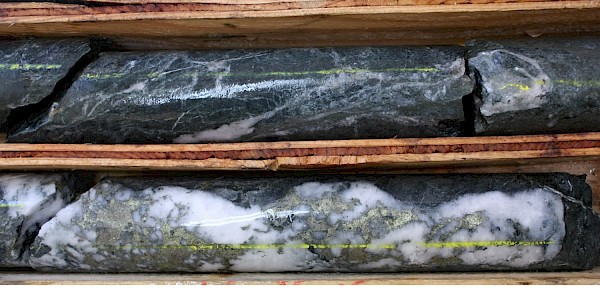
- DDH KLI-21-037: Targeted to infill and test for extensions of mineralization to the west of KMZ and was terminated at a depth of 579 m. This DDH was successful in extending mineralization to the west and at depth. Porphyry-style veining was observed throughout the entire length of the hole.
Figure 2
Chalcopyrite+pyrite mineralization in KLI-21-037 at 121 m
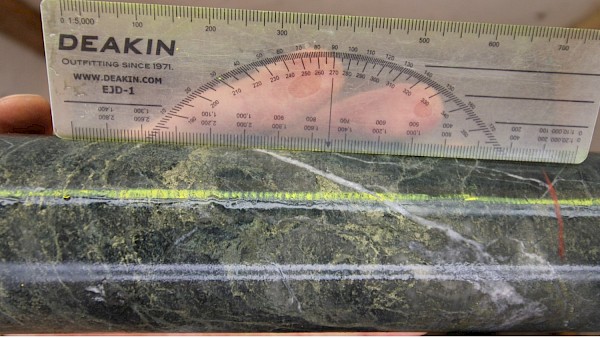
- DDH KLI-21-038: This DDH targeted the interpreted centre of the porphyry system and was designed to test for mineralization at depth. The hole ended in mineralization at 516 m but was terminated due to difficult ground conditions.
Figure 3
Chalcopyrite+bornite mineralization at 345.05 m in KLI-21-038
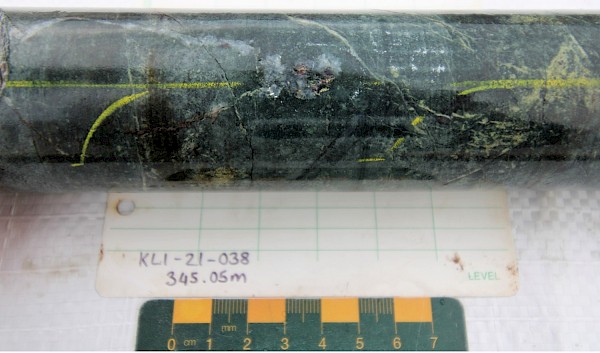
Due to delays caused by forest fires at the beginning of the exploration season and a shortage of experienced drillers, Pacific Ridge was only able to complete 1,544 m of the planned 2,500 m before winter conditions set in. With a shortened season and suboptimal drilling rates, Pacific Ridge focused on the KMZ target and opted to defer testing the Kliyul East and Kliyul West targets (see Figures 4, 5, and 6). Pacific Ridge plans to test these and other targets in 2022. Assay results from the 2021 drill program will be released as soon as they are available.
“Although we weren’t able to achieve 2,500 metres of drilling due to wildfires and a lack of experienced drillers, we are very pleased with the drilling that we did complete,” said Blaine Monaghan, President & CEO of Pacific Ridge. ”Based upon the mineralization styles observed in the 2021 diamond drill cores, we are confident that we will equal or better the historic drilling results from the Kliyul Main Zone. In addition to the Kliyul Main Zone, significant targets remain insufficiently tested at Kliyul. The findings from our maiden 2021 drill campaign will be used to build an expanded drilling program in 2022.”
Figure 4
Plan view of 2021 drill holes and significant, historic drill intercepts (see Table 1)
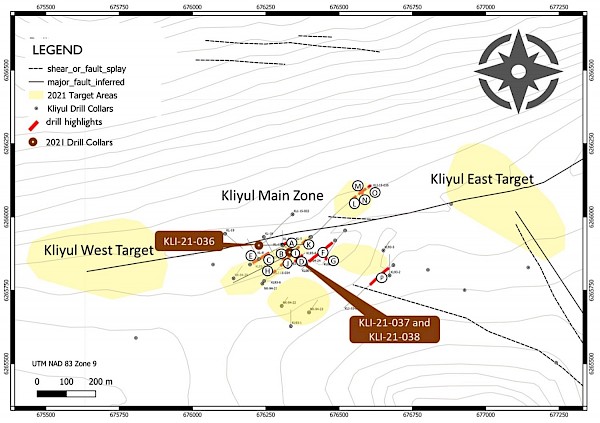
Figure 5
Plan view of 2021 drill holes, significant, historic drill intercepts (see Table 1), and colour-contoured IP chargeability inversion
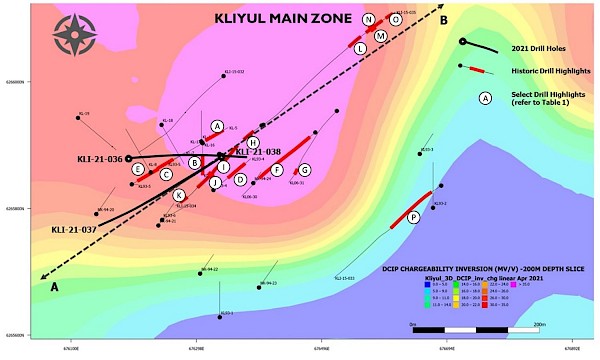
Figure 6
Cross-section of 2021 drill holes and significant, historic drill intercepts (see Table 1)
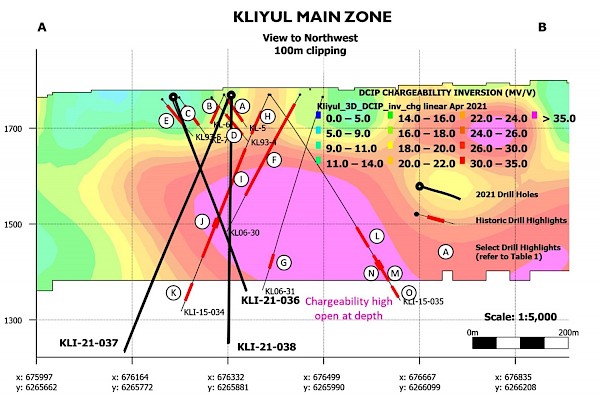
Table 1
Significant, historic drill intercepts

*CuEQ = ((Cu(%) x $2.25 x 22.0642) + (Au(gpt) x $1,650 x 0.032151)) / ($2.25 x 22.0642)
*AuEQ = ((Cu(%) x $2.25 x 22.0642) + (Au(gpt) x $1,650 x 0.032151)) / ($1,650 x 0.032515)
New copper skarn prospect
The 2021 property-scale mapping program discovered a previously unmapped copper skarn prospect, located approximately 800 m southeast of mineralization encountered in drilling at KMZ, which presents as chalcopyrite+bornite mineralized garnet-porphyroblastic marble within a carbonate sedimentary package. Outcropping mineralization is located at a break in the slope and extends over an approximate 20 m strike-length and has a minimum mapped thickness of approximately 1 m. True thickness is unknown due to talus cover. This prospect is located along a northwest trend of porphyry targets and favourable alteration, as further described in the section below. Numerous copper-gold porphyry systems worldwide are associated with skarn and carbonate-replacement deposits both distal and proximal to porphyry mineralization, thus this carbonate-hosted prospect represents an attractive target.
About the Kliyul Project
Over 60 km2 in size, Kliyul is located 50 km southeast of Centerra Gold Inc’s Kemess mine and 5 km from the Omineca mining road (see Figure 7) in one of the most geochemically anomalous areas for copper and gold in the Quesnel Terrane. The Project contains five main target areas: KMZ, Bap Ridge, Ginger, M39, and Paprika (see Figure 8), each representing an interpreted porphyry centre within a 4 km northwest-trending strike length. KMZ is the most intensely explored with 33 drill holes (5,524 m) drilled since 1974, most of which targeted a near-surface copper-gold magnetite zone (drill holes KL-5 to KL-93-5). Deeper drilling during 2006 and 2015 encountered a porphyry copper-gold system (drill holes KL06-30 to KL-15-35).
The Project displays classic copper-gold porphyry patterns of alteration and mineralization. Geological interpretation, supported by geophysical surveys (IP, ground and aeromagnetics and magnetotellurics), suggests there is significant potential to expand the known dimensions of the Kliyul mineralized system.
Figure 7
Kliyul copper-gold porphyry project location
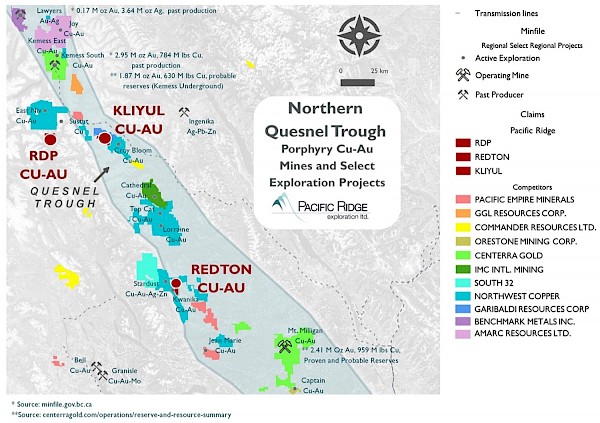
Figure 8
Kliyul target areas

Kliyul option agreement
Pacific Ridge has the right to earn a 51% interest in the Kliyul and Redton projects from Aurico Metals Inc., a wholly owned subsidiary of Centerra Gold Inc., by making cash payments totaling $100,000, issuing 2.0 million shares and spending $3.5 million on exploration by December 31, 2023. The Company then has the right to increase its interest in the properties to 75% by making additional payments totaling $60,000, issuing 1.5 million shares and completing an additional $3.5 million in exploration by December 31, 2025.
About Pacific Ridge
Our goal is to become one of the leading copper-gold exploration companies in British Columbia. Pacific Ridge’s flagship project is the Kliyul copper-gold project, located in the Quesnel Trough, approximately 50 km southeast of Centerra Gold’s Kemess mine. In addition to Kliyul, the Company’s project portfolio includes the RDP copper-gold project and the Redton copper-gold project, both located in British Columbia. Pacific Ridge will continue to search for projects that offer discovery opportunity in our regions of expertise.
On behalf of the Board of Directors,
“Blaine Monaghan”
Blaine Monaghan
President & CEO
Pacific Ridge Exploration Ltd.
Corporate Contact:
Blaine Monaghan
President & CEO
Tel: (604) 687-4951
www.pacificridgeexploration.com
Investor Contact:
G2 Consultants Corp.
Telephone: +1 778-678-9050 Email: ir@pacificridgeexploration.com



